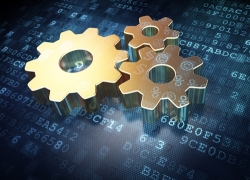Synergy in the data center: Power, cooling, monitoring and DCIM
Synergy in the data center: Power, cooling, monitoring and DCIM

When it comes to the infrastructure of the data center, there are a lot of little components that make up the whole. The most important metrics taking place in a data center facility are power usage, cooling effectiveness, and climate and temperature monitoring. In order to keep the data center environment functioning at the highest capacity, it's crucial for infrastructure providers to maintain a synergistic approach to data center solutions. Each of these metrics is part of a whole. All of these functions come together to form a whole - painting the complete picture of the health of the data center.
Why is synergy an infrastructure provider's best bet? Here are a few easy reasons:
Power and cooling: two sides of the same coin
Power and cooling systems go hand in hand. The efficiency of one impacts the other, especially from the cooling side. Depending on the efficiency of the cooling system, power usage can go up or down. According to one industry report, cooling accounts for nearly 37 percent of electricity used in a data center, so having an efficient system could lead to a decrease in energy consumption and an increase in eventual savings.
Fast detection leads to less downtime
Ensuring server uptime is the most important data center function. When monitoring systems are hooked into power and cooling systems, potentially negative effects on the data center can be avoided. For instance, when server room temperature is monitored effectively using next-gen oversight solutions, managers can ensure the racks don't go above the maximum temperature regulated by the American Society of Heating, Refrigerating, and Air-Conditioning Engineers. Managers can use these tools to quickly detect fluctuations in temperature and thus minimize instances of overheating and prevent fire or other related issues in the data center.
DCIM brings everything together
All the separate elements of power, cooling, and climate and temperature monitoring come together in the data center infrastructure management system. DCIM provides data and analysis about the server room, whether it be temperature, power usage or another key variable. This information gives IT managers a bird's-eye view of the server room and can be an essential tool in dealing with problems like spikes in voltage or uncommonly high temperatures.
DCIM can be helpful in monitoring power consumption. The power usage effectiveness metric is an important one to understand in the data center environment as far as power is concerned. According to Data Center Knowledge, PUE is the ratio of the amount of power coming into a facility over its use in IT infrastructure. In 2014, the Uptime Institute conducted a survey that found that the average PUE for data centers is 1.7. That number hasn't moved in the last four years, so optimizing IT assets is crucial for a facility's goal PUE to be realized.
Data Center Knowledge contributor Julius Neudorfer reported that DCIM can be used to impact the PUE. In some cases, making simple changes to the cooling system based on data given by the DCIM software could reduce energy usage by 5 or even 10 percent. Data center monitoring can also lead to increased IT productivity, according to TechTarget contributor Bill Kleyman.
"You can't effectively manage what you can't monitor," Kleyman said. "The only way to run a properly optimized data center is to have a solid monitoring platform designed for your environment."
Monitoring, DCIM, power and cooling are all pieces of the puzzle that is a data center. As Kleyman pointed out, the surefire way to maintain optimization is to incorporate all of these functions into one solution. Geist offers all of these options so that easy data center monitoring is possible from one system.



